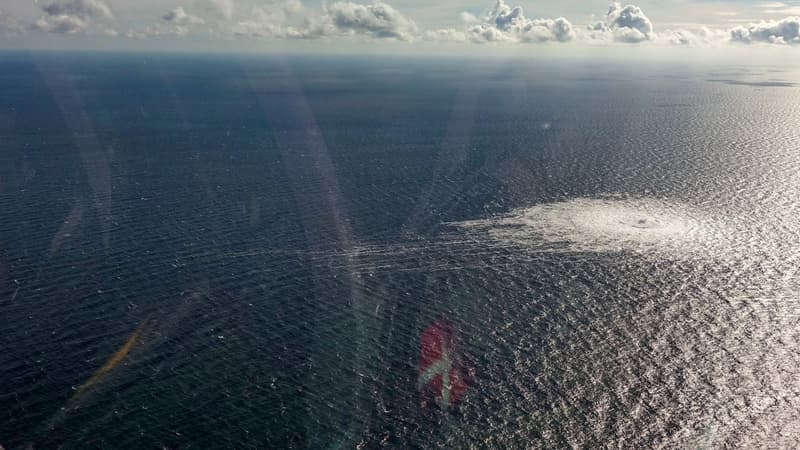The Atlantic Alliance wants to bet on naval drones in the Baltic to complete the System of Surveillance against Russian “Fleet” or Threats against submarine cables.
NATO launched the Baltic Sentry operation in January to monitor this sea from northern Europe with war ships and airplanes after the degradation of several submarine cables.
This western organization began a parallel experiment to add a “robotic supplement,” said French admiral Pierre Vandier, Supreme Commander Allied Transformion (SACT), one of the two strategic commanders of the Alliance.
Forty surface drones
As part of this experiment, carried out for a month and along the way, around forty surface drones and “thirty complementary objects, submarines and air have been implemented,” he said, showing the images taken by one of these drones of a Russian war building that escorts a “Ghost fleet” boat.
These ships allow Russia to export their oil despite the sanctions. Europeans regularly accuse them to damage, voluntarily or not, submarine cables, while constituting an environmental threat.
In December, the Islink 2 electric cable and four telecommunications cables that connect Finland with Estonia and resting at the bottom of the Baltic Sea were damaged. The researchers suspect that they were on the anchor of the eagle s, an oil tanker who exceeded the Cook Islands that would be part of this “ghost fleet.”
The drones of this “Task Force X” of the NATO operate in three places respectively located in Gniben in Denmark, on the Swedish island in Gotland and Upiniemi, Finland. The objective is now to propose to the countries of the Riverains Atlantic Alliance of the Baltic to acquire these materials.
According to which “if each of the eight Baltic countries buys ten, we have 80 drones that will operate almost H24 with cost effects on the maintenance of the naval condition that are huge.”
“Conceptual Revolution”
Operation Baltic Sentry costs four to five million euros a day, the experimentation of one month with drones cost ten million euros.
The experiment was established in 30 days through a call of tenders to which 70 companies have responded, 20 of which were selected.
For NATO, it is a “conceptual revolution”: “We have not returned through military specifications”, the military must be satisfied, but “we take what is on the shelf (and) we try,” he emphasized, reporting “very interesting” results.
Having become a “NATO lake” with the entrance of Sweden and Finland in NATO, “Baltic, St. Petersburg, is between 50 and 60% of the economic supplies of Russia,” the Chief of Personnel of the French armies, General Thierry Burkhard, recalled on Thursday in front of the deputies.
Source: BFM TV


